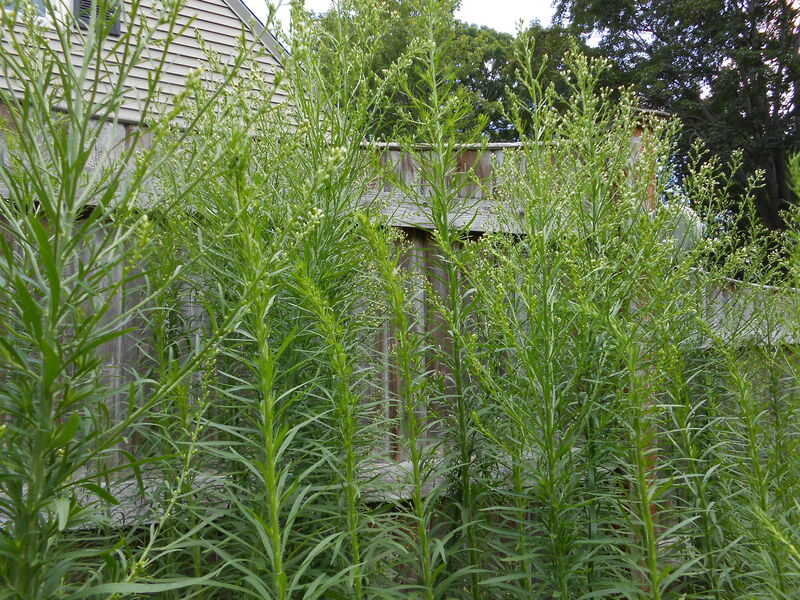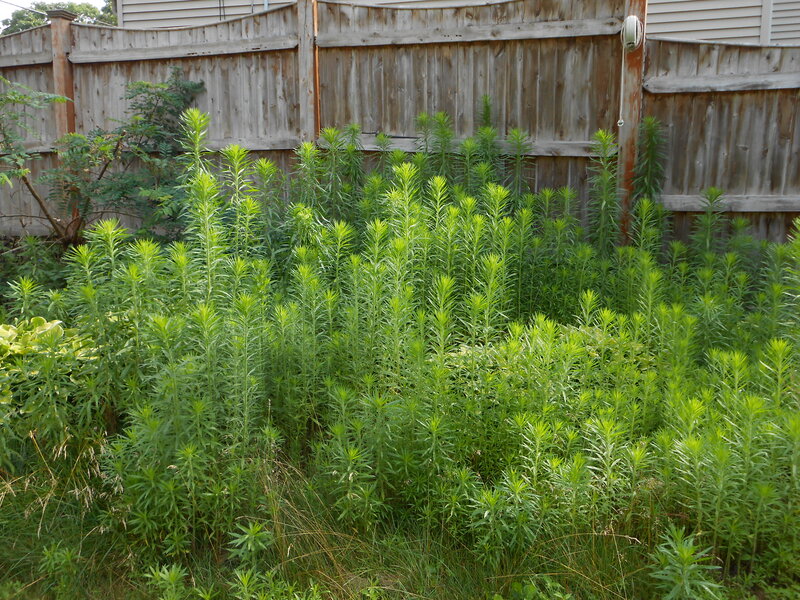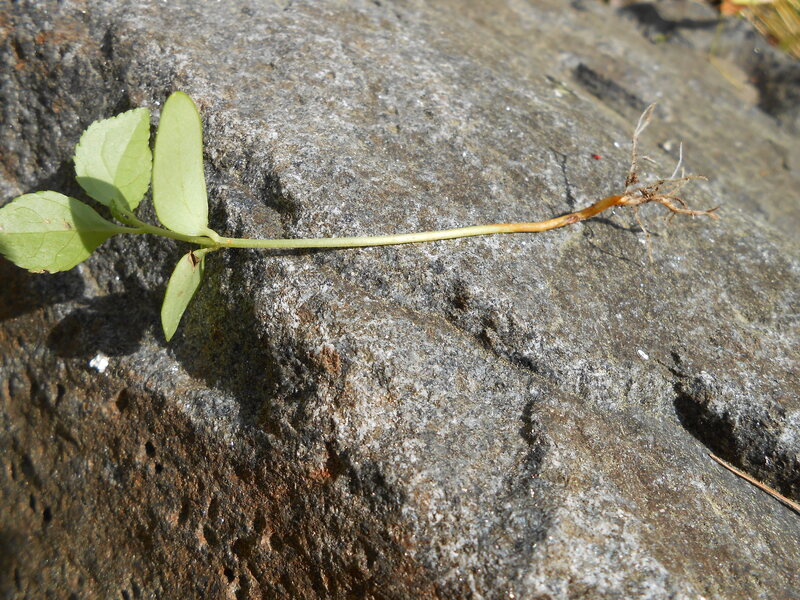|
I found a dead mouse in a small puddle of water at the bottom of a bucket. It's the bucket I keep outside the door that I should be using for compost. It has a cover that I should have replaced. But I have been lazy with my composting and lazy with putting things where they are supposed to be. And the result is a sad, needless death of a scared mouse.
It is a solemn reminder of our power as humans to manipulate the environment. And a reminder to myself not to become too busy to take care of the life that benefits from my care and dies from my negligence. A life is a life, whether it's a mouse, a chipmunk, or a possum. And a home is a home, whether it's a spiderweb, an anthill, or a hole in the ground.
0 Comments
I have to cut down this plant today and I will miss it.
This spring, it started popping up everywhere. I hoped it was an Aster or Goldenrod, and tried to wait until fall to find out. I ended up getting impatient and googled "light green plant with lots of leaves", like a genius, and found out it's Horseweed, Conyza canadensis. It's an annual plant with "insignificant flowers" according to the Illinois Wildflower Society. A variety of small flies feed on the nectar, and other insects eat the leaves and stem. I let it grow all summer. I wanted to feed those tiny insects, and the plant kept me company in my barren, boring yard. Look at the composition of the third photo! It's my absolute favorite area and I love looking at it. So beautiful, without anyone doing a thing. I have to cut it down today because it's going to seed. If I'm going to be planting trees or vegetables next year, 10 million Horseweed seeds in the soil could cause me some trouble. I attempted to cut it down last week and got sentimental, so we shall see if I can handle it today. Oh, and the reason I'm cutting it down rather than pulling it out is to maintain soil integrity. Ripping it out would disturb the soil, opening it up to erosion and colonization by other weeds. Plus, Horseweed grows branches when it is cut, so I will still have the plants (no seeds) until the vegetation is killed by frost! Bittersweet is a vine from Asia (there's a type native to here but I've never seen it) that grows in sunny conditions. It loves forest edges where it can scramble up trees. If you've looked at the sides of highways late summer and seen masses of vines smothering the trees, that's bittersweet. It's important to get it out of your yard because it will truly take over, killing your trees and smothering your other plants. The easiest way to remove it from your yard is to spot the seedlings. They are upright little plants with light green leaves and a yellow root when very young, orange at maturity. The root is the easiest way to identify the plant. If you've ever pulled a mature vine, you know that its bright orange root goes underground forever. If you see something that might be bittersweet but aren't sure, pull one up and check the root. Better to pull one wrong plant than let your yard be overtaken. Plus, I learned to identify bittersweet by pulling large vines and associating the leaf forms with that root, so it helps you learn the plant. If you've got larger vines, you'll have to decide whether to dig them out or clip them at the ground. Digging is more thorough, but it disturbs the soil, and if you've got other undesirable plants around, they could colonize that space. Clipping growth at ground level 6 times a year will eventually exhaust the root without disturbing the soil. And these vines spread through birds eating the berries and dropping them around. This winter I saw red/orange berry husks in the snow and knew they were bittersweet seeds. I got a plastic spoon and scooped them into the garbage, which is totally not weird. So, do your best in the fight against bittersweet. If we all monitor our own yards, it prevents further spread of the vine. We moved in January 2019. I committed to watching the yard for a year before doing anything. (This resolve waivers constantly and the yard looks like hell.) I wanted to learn about the soil, the way wind and water moved through the space, and most importantly, to see what plants were already there. Maybe there would be something good! Here are my initial observations.
So that's where we are starting. I hope someday this yard is unrecognizable and full of life. The first time I went out on the landscape crew at work, I was like "cool! I'm gonna get tough hands."
But that did not happen. The landscape crews wear gloves at all times, even when weeding. Because there's all kinds of weird stuff out there. Animal excrement, spiders, splinters, sharp plants. Plus, your fingernails get dirty. And I don't like that look for myself. So don't garden without gloves. You'll get nasty splinters and thorns which will make you hate going outside. I am deeply aware of "what the neighbors must think of us", so when I noticed the weeds creeping out from under our fence onto the sidewalk, I had to fix that area. My fix was to pull the weeds and sprinkle clover seed into the area. Simply pulling the weeds would not have been good enough. More would grow. As Lee Reich says, "Nature abhors a vacuum, and so should you". Nature will populate any bare area with plants, and they will most likely be weeds. I decided to choose what she populated this area with by seeding clover. Ok, so I have accepted that Nature covers bare spots with plants, but I never thought about why until I started noticing that as I pulled out the weeds, insects and worms went skittering. These plants were their home. Nature covers herself with plants to make homes for her little bugs. Back to clover. Here are the benefits:
Here are a few tips on doing it. You'll need to water the area a little bit every day, just to keep the soil surface moist.
And there you have it! Have fun making stupid areas into nice beds of clover! Last night we had a thunderstorm and I decided to go sit on the deck after the rain stopped. As I looked out at this view, it came to me all of a sudden what I wanted to do with it. This has come after much study on permaculture, reading about septic system functioning, measurement, and a walk through a meadow that day.
I'd better get sheet mulching! |
Categories
All
Archives
August 2021
|
Proudly powered by Weebly












 RSS Feed
RSS Feed